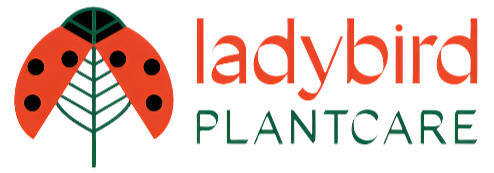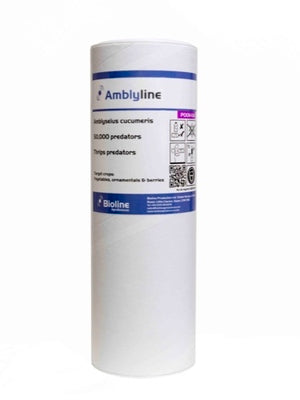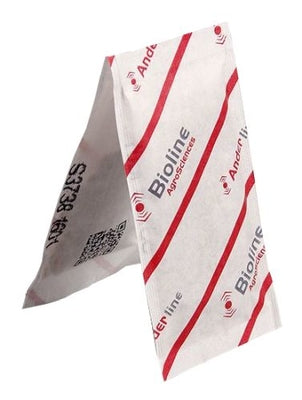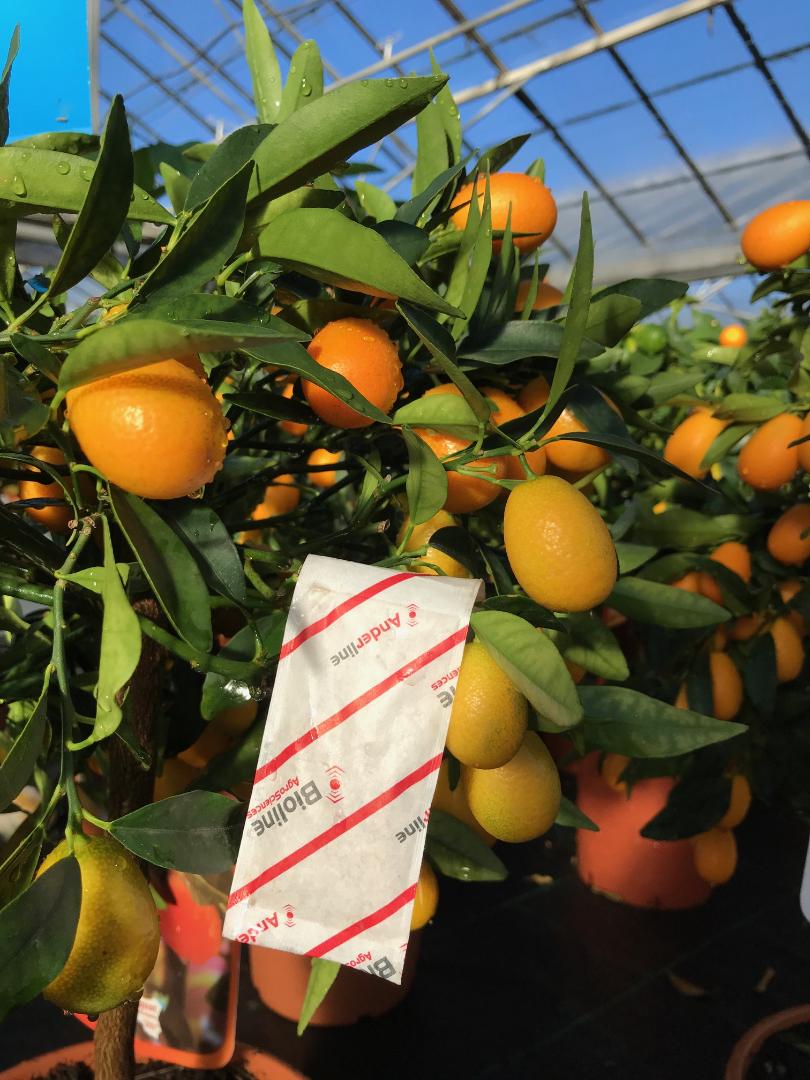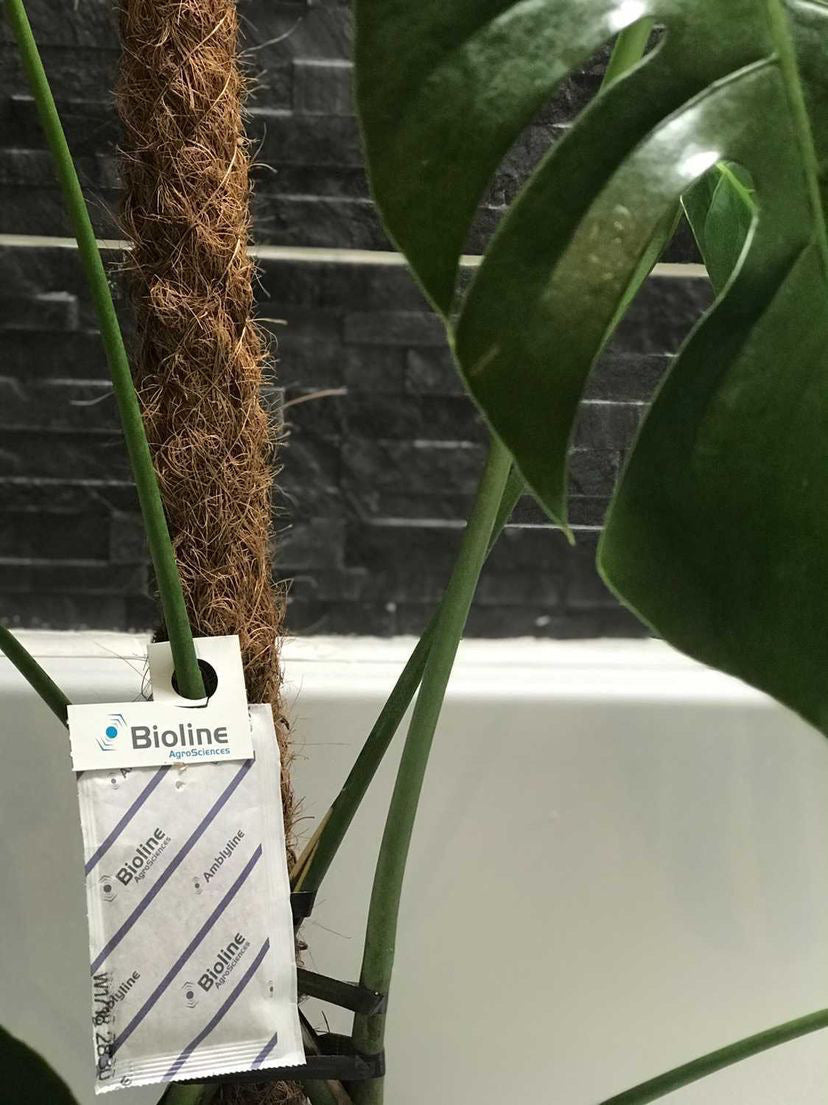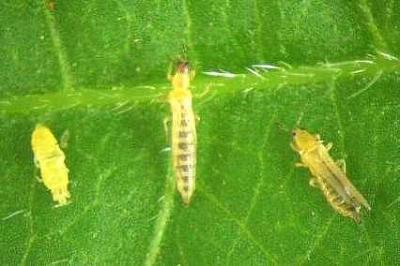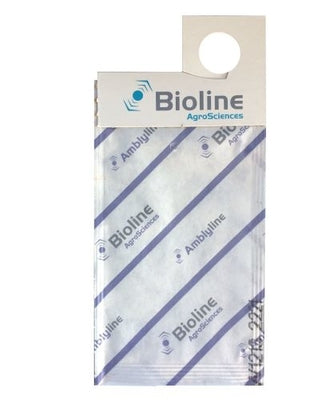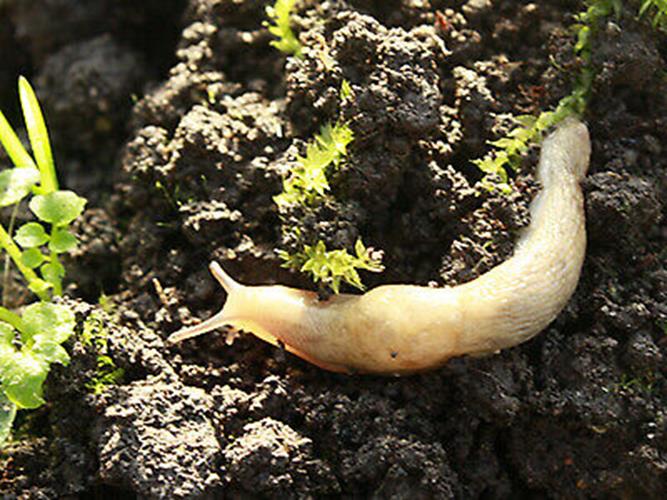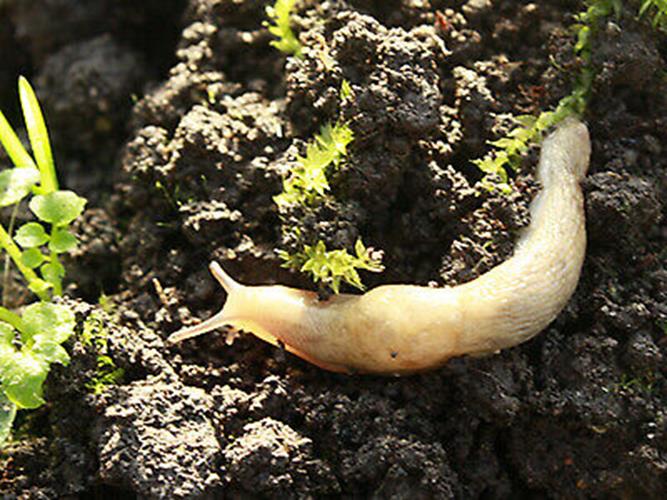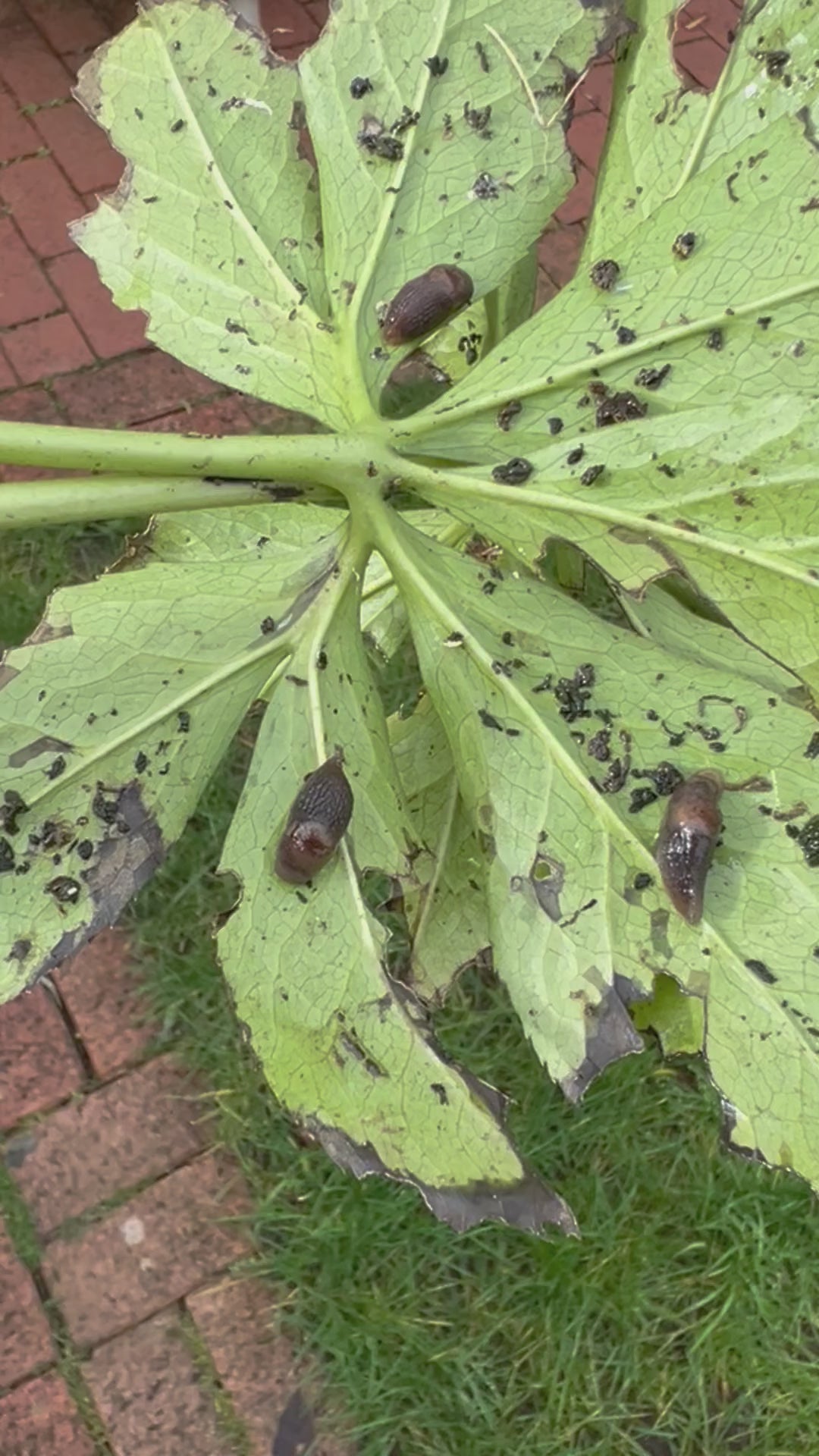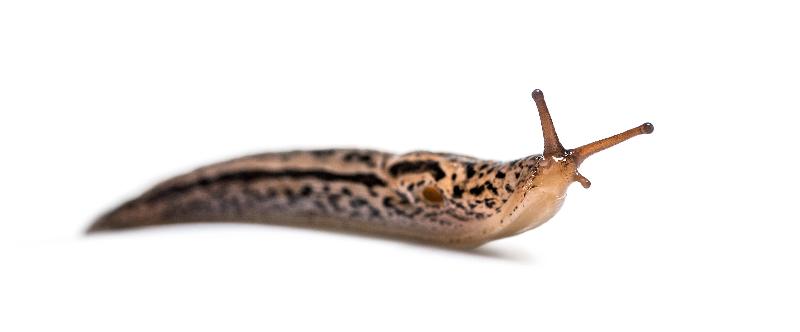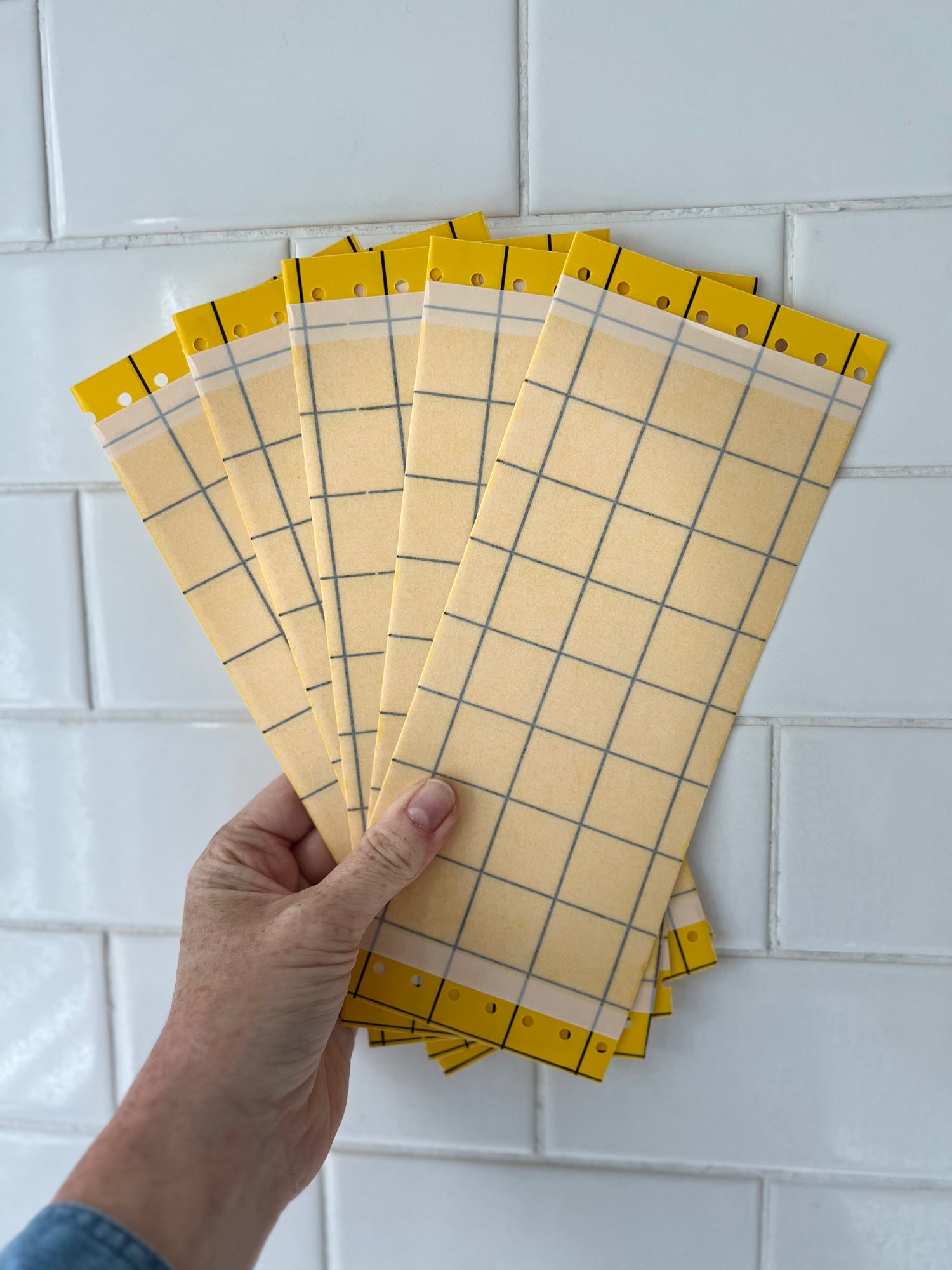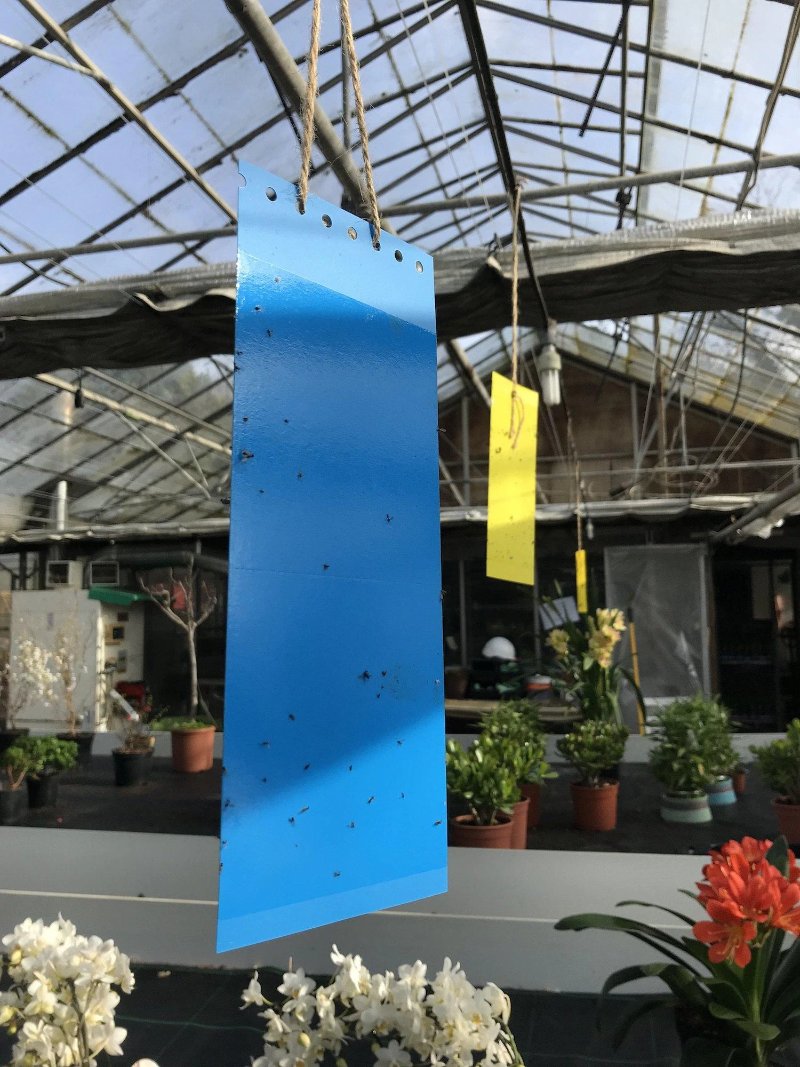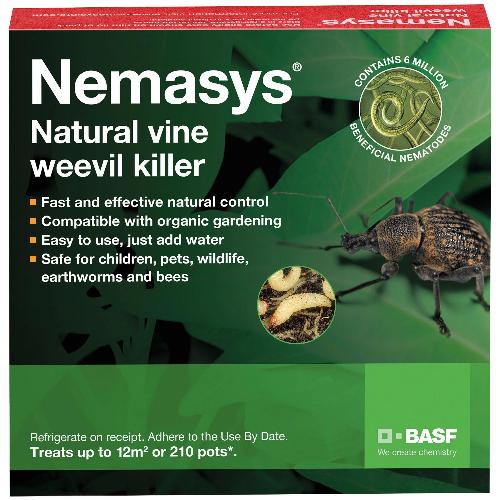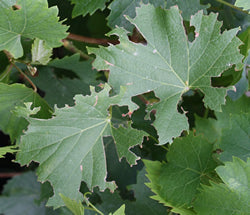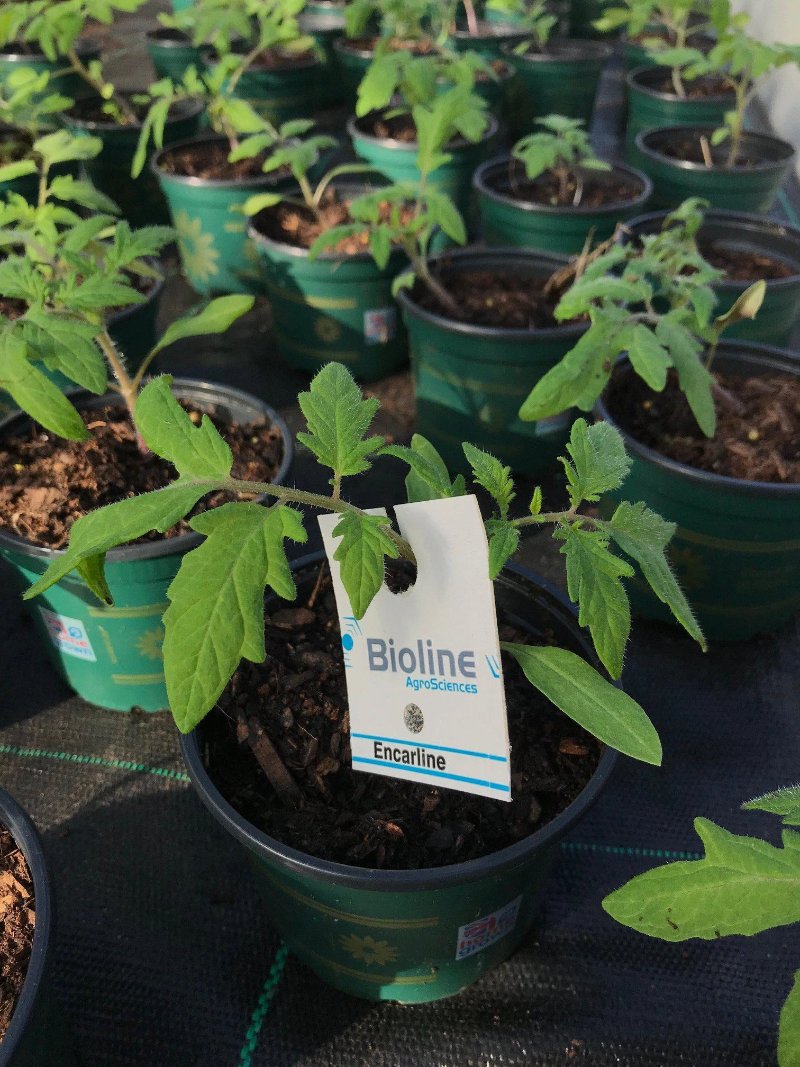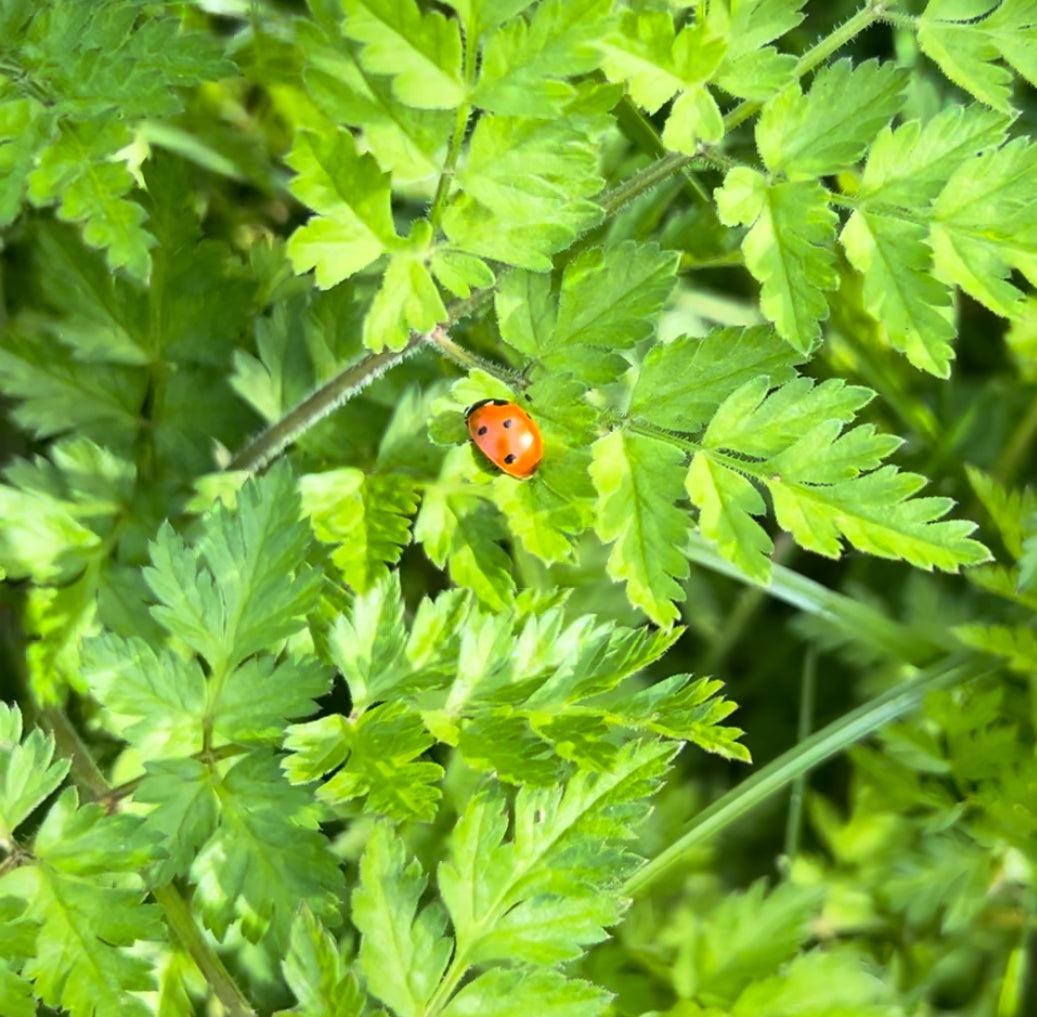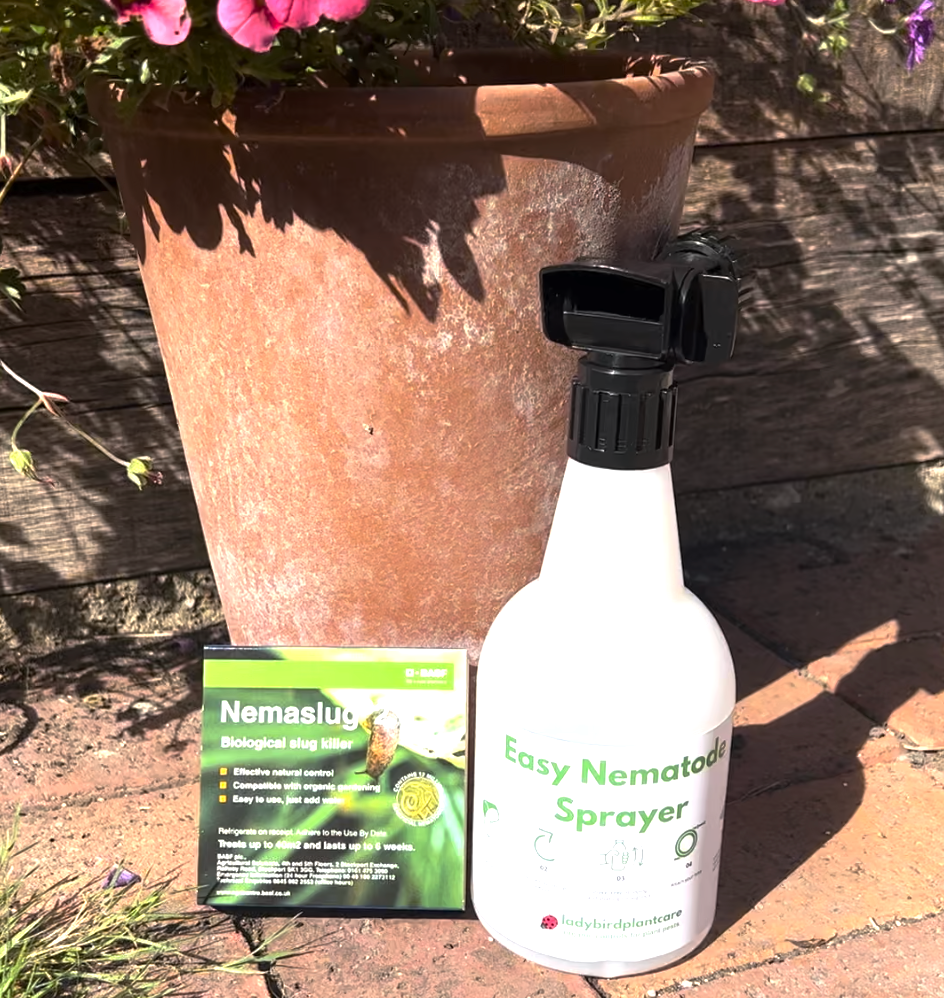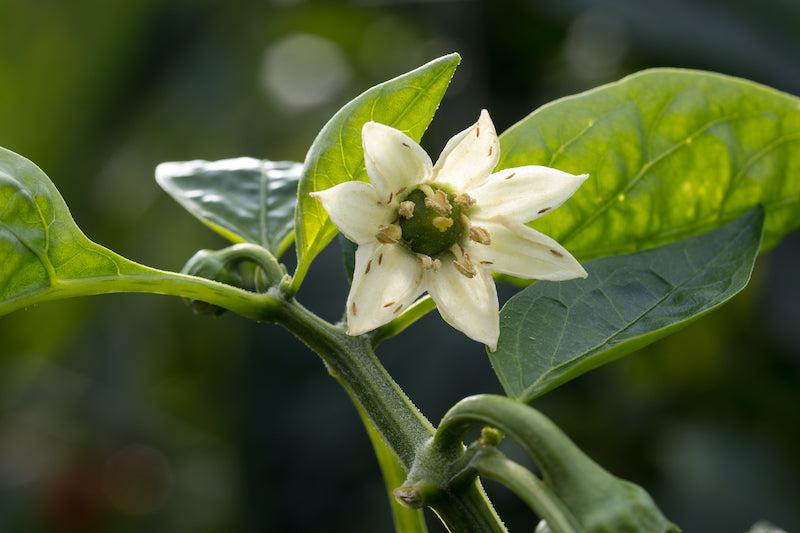Products
Sort by:
47 products
47 products
These mites are one of the most effective killers of sciarid fly larvae.
Mobile predatory mites that feed on sciarid fly larvae and other 'soil' pests including springtails, thrips pupae and root mealybug. Adults are reported to live for several months and survive up to 50 days without food, making them ideal in situations of very low pest populations. At night they move a short distance up, on to the plant foliage and will feed on mealybug and other soft bodied prey. Mites are very mobile and soon distribute themselves throughout the crop.
Sold in 2 sizes. Orders placed by 10am Monday will be despatched later in the week.
Thrips Prevention - Thrips are very difficult to reach with chemical sprays but Amblyseius predator mites are small enough to find and eat them, release early as they control the first stages of the Thrips lifecycle.
Use indoors, all year round.
Use outside, introduce the Amblyseius in mid-May, or earlier where temperatures are constantly warm. Amblyseius will survive on pollen from flowers until the young thrips start to appear and provide them with a preferred diet, thus preventing an infestation from taking hold.
This product should be used in prevention of an outbreak so either around the time that you normally see Thrips or at the very first sign that they are present. If you already have a Thrips problem then please check out our other products for Thrips as you will need something that also controls the adult stage.
Biological controls are not always kept in stock, they are ordered in fresh. This can sometimes lead to a time lag between when you place the order and when it is despatched. Order by 10am Monday for same week despatch.
Amblyseius Andersoni is primarily used to prevent and treat Fuchsia Gall Mite. It's an excellent product for catching the mites as they comes out of hibernation in the early spring. DO NOT ORDER THIS PRODUCT IS YOU ALREADY HAVE A GALL MITE INFESTATION, SEE ADVICE BELOW.
The sachets contain a breeding colony of mites that crawl out slowly over a period of 4-6 weeks stopping an infestation from taking hold. If you already have the pest in large numbers please cut the worst of the infestation away before introducing the predators.
These predatory mites are widely used in commercial glasshouses to control unwanted plant pests. Amblyseius Andersoni is used to treat different species of Red Spider Mite (Tetranychus spp. and Panonychus spp.) Fuchsia Gall Mites, Pear Blister Mites, Rust Mites and Thrips, it can tolerate a wide range of high and low temperatures 6°C to 40°C, making it a great early season control.
If you have left it a bit long for the slow release to get on top of the population, if a pest population is already established it will be difficult for Amblyseius species to gain effective control quickly. Species such as Phytoseiulus stand a better chance at bringing about a curative control due to the species ability to move easily across the webbing structure. You can fine that product here.
Amblyseius Andersoni is primarily used to prevent a spider mite infestation (especially in houseplants) or as an out of season control rather than as a solution for a bad infestation. It's an excellent product for catching the spider mites as they come out of hibernation in the early spring.
The sachets contain a breeding colony of mites that crawl out slowly over a period of 4-6 weeks stopping an infestation from taking hold. If you already have spider mites in large numbers please use Phytoseiulus first.
These predatory mites are widely used in commercial glasshouses to control unwanted plant pests. Amblyseius Andersoni is used to treat different species of Red Spider Mite (Tetranychus spp. and Panonychus spp.) Fuchsia Gall Mites, Pear Blister Mites, Rust Mites, Boxus Mite and Thrips, it can tolerate a wide range of high and low temperatures 6°C to 40°C, making it a great early season control.
Thrips Prevention - Thrips are very difficult to reach with chemical sprays but Amblyseius predator mites are small enough to find and eat them, release early as they control the first stages of the Thrips lifecycle.
These sachets contain a breeding colony of mites that crawl out slowly over a 4-6 week period and attack the larvae and pupae stages of Thrips. You can read the instructions for use HERE.
Inside the sachets can be used all year round and pose no risk to pets or humans.
Outside, for best results, introduce the Amblyseius in mid-May for frost-free glasshouses, or earlier where temperatures are constantly warm. Amblyseius will survive on pollen from flowers until the young thrips start to appear and provide them with a preferred diet, thus preventing an infestation from taking hold.
This product should be used in prevention of an outbreak so either around the time that you normally see Thrips or at the very first sign that they are present. If you already have a Thrips problem then please check out our other products for Thrips as you will need something that also controls the adult stage.
Nemaslug alternative
Slug nematodes can be used once your soil temperature is above 5°C. Check your soil temperature here. Do not buy nematodes more than a week before application.
We supply packs of microscopic beneficial nematodes (eelworms) which are watered into pots or open ground. You can read the application instructions HERE.
Use as soon as soil temperature reach 5°C and every 6 weeks to keep slugs at bay. This pack treats 40 sqm. You can order individual packs or multiple packs delivered at 6 week intervals. Click here for 100 sqm.
Got a question about using nematodes? You may find the answer here
Nemaslug Alternative
Treats 40 sqm - use when soil temperature is above 5°C. This is a great alternative to Nemaslug, it works in exactly the same way.
We supply packs of microscopic beneficial nematodes, Phasmarhabditis californica, (eelworms) which are watered into pots or open ground. This is a perishable product, do not buy in advance.
You can read the application instructions HERE.
Slugs eat leaves, stems and roots of plants, weakening them and often causing them to die.
They leave slimy trails over plants and soil, and are particularly devastating to seedlings and cuttings. Slugs leave their own individual scent trails so they can find their way home. There are other creatures (like caterpillars) who make big holes in leaves, but if you see the tell-tale slime, then slugs are the culprit!
Slugs come in many shapes and sizes and are commonplace around the garden, particularly in damp conditions.
Infestations are less serious in dry weather but tend to become a problem during prolonged rainy weather. An individual grey field slug has the potential to produce 90,000 grandchildren and has approximately 27,000 teeth!
They live underground during the day, emerging at night to feed. One cubic metre of garden will on average contain up to 200 slugs.
We supply packs of microscopic beneficial nematodes, Phasmarhabditis hermaphrodita, which are watered into pots or open ground with a watering can or hose. They enter the slug through a hole in its back while it is underground and poison it so that it will die within a few days underground, out of sight.
Nemaslug or alternative
These nematodes can be used once your soil temperature is above 5°C. Check your soil temperature here. Do not buy nematodes more than a week before application.
We supply packs of microscopic beneficial nematodes (eelworms) which are watered into pots or open ground. Use as soon as soil temperature reach 5°C and every 6 weeks to keep slugs at bay. This pack treats 100 sqm. Click here for 40 sqm
Traps are a great way to find out what pests are present on your plants and can trap a good quantity of flying and crawling pests.
Sold in packs of 5.
Sticky traps are a great way of monitoring and reducing pest numbers.
Yellow catch aphids, whitefly, leafminers, fungus gnats and more. The yellow trap are eco friendly card traps.
Blue traps are great for thrips.
Red traps for monitoring and controlling leafhoppers.
Vine Weevil nematodes are watered into pots or open ground with a watering can or hose, killing the vine weevil grubs.
Use as soon as the soil temperature reaches 5°C. The parasitic nematodes enter the grub, poisoning it and then feeding off it to increase their numbers.
Sold in 2 sizes.
Biological controls are not always kept in stock, they are ordered in fresh. This can sometimes lead to a time lag between when you place the order and when it is despatched. Order by 10am Monday for same week despatch.
NB This predator is only active at temperatures in excess of 18-20°C
The most effective treatment for whitefly is the parasite "Encarsia". It is supplied on small cards which can be hung up around your plants. You can read the instructions for this product HERE.
The smallest packs (5 & 10 cards) are only available March to mid September. Biological controls are not always kept in stock, they are ordered in fresh. This can sometimes lead to a time lag between when you place the order and when it is despatched. Order by 10am Monday for same week despatch.
Glasshouse whitefly are small white flying insects which lay eggs on the undersides of leaves. Whiteflies suck sap from their host plant and drop sticky secretions onto leaves below. Left uncontrolled they will overwhelm the plant, weakening it and flying around in huge numbers. Undersides of leaves become populated with Whiteflies adults and white eggs (scales).
Whitefly are fairly inactive in cool temperatures over Winter, but multiply very quickly in warm Spring and Summer weather. They fly about at the slightest disturbance, like tiny moths, and may even create ghostly white clouds in the air.
Instructions for use
Encarsia works best with temperatures above 21°C but prefer cool glasshouse conditions below 25°C with 12hr+ daylight hours. Generally, this means introducing Encarsia from mid March to August, although it can be earlier or later with extra heat and light.
Hang cards on lower branches so that they may be in a slightly shady position.
5 cards should give good control for an average conservatory or small greenhouse. If you have a longstanding battle with whitefly follow up the initial treatment with a second introduction one weeks later. If you have a low lever of whitefly or are using Encarsia as a preventative method then application can be every 2 weeks.
Identifying Whitefly
Remember whiteflies are nearly always moving. If you see white threads static on tops of the leaves, they are not whitefly but something else - very likely to be shed aphid skins dropped down from developing Aphid under leaves above. Or they could be thrips larvae. They are not "whitefly" unless body and wings are a ghostly white.
The glasshouse whitefly (Trialeurodes vaporariorum)is the most common. You can recognise them by their heart-shape profile when looked from above. Tobacco whitefly (Bemisia tabaci) have parallel wings which are longer, and when folded you can still see a strip of their back between the wings. There are up to 50 different species of whitefly in Europe, but from a gardeners point of view they are all plant pests.
Although Encarsia is very effective for the common glasshouse whitefly, it doesn't work so well for tobacco whitefly. It's therefore worth trying to identify what whitefly you have before treating. If you need any help identifying the whitefly you have then please don't hesitate to contact us.

